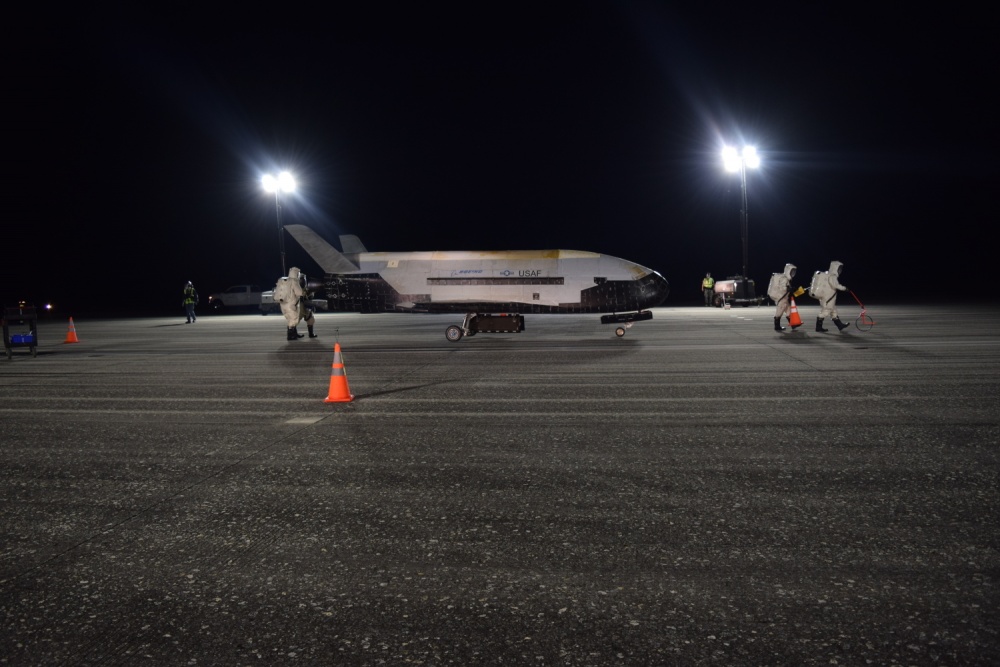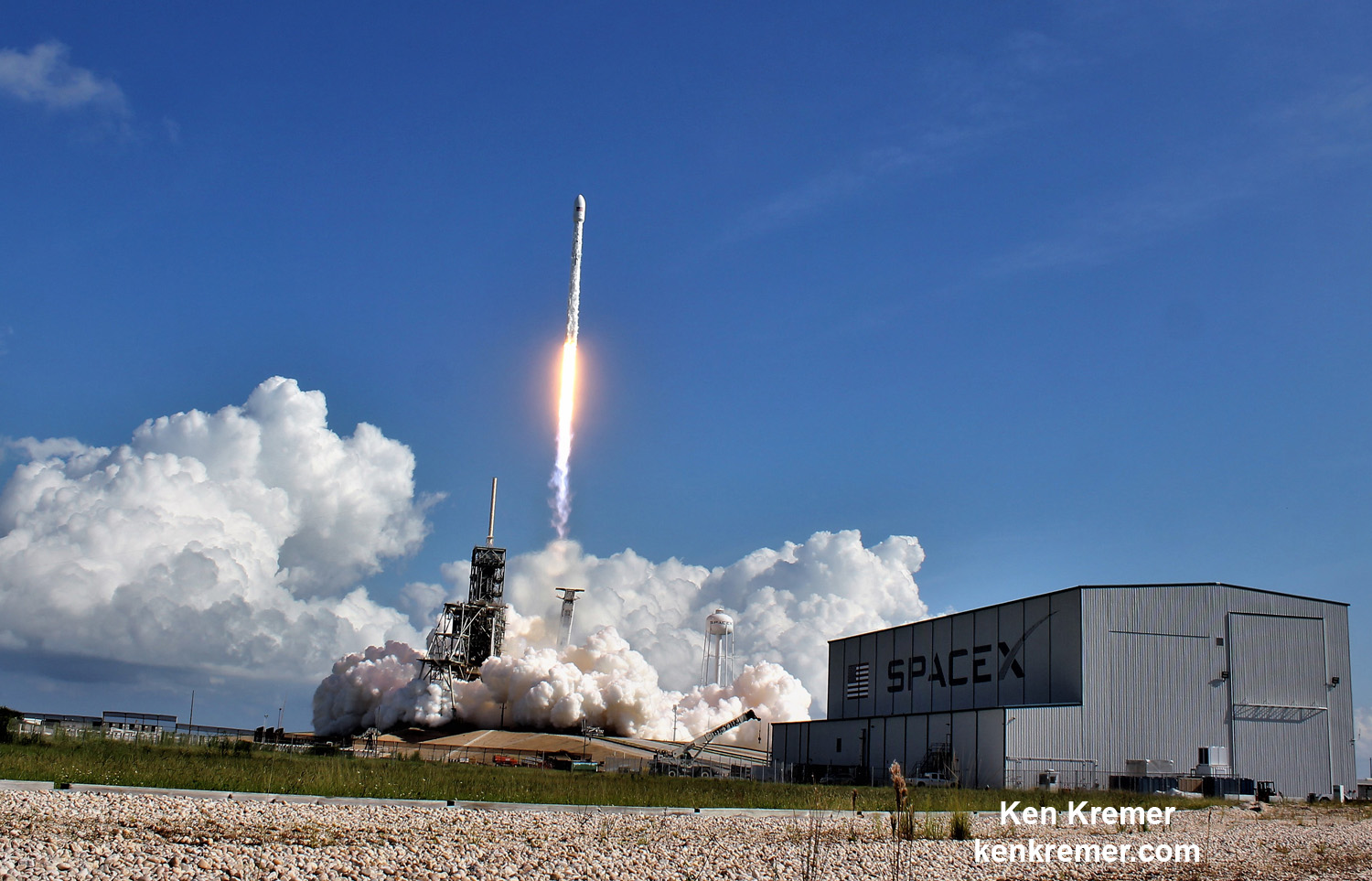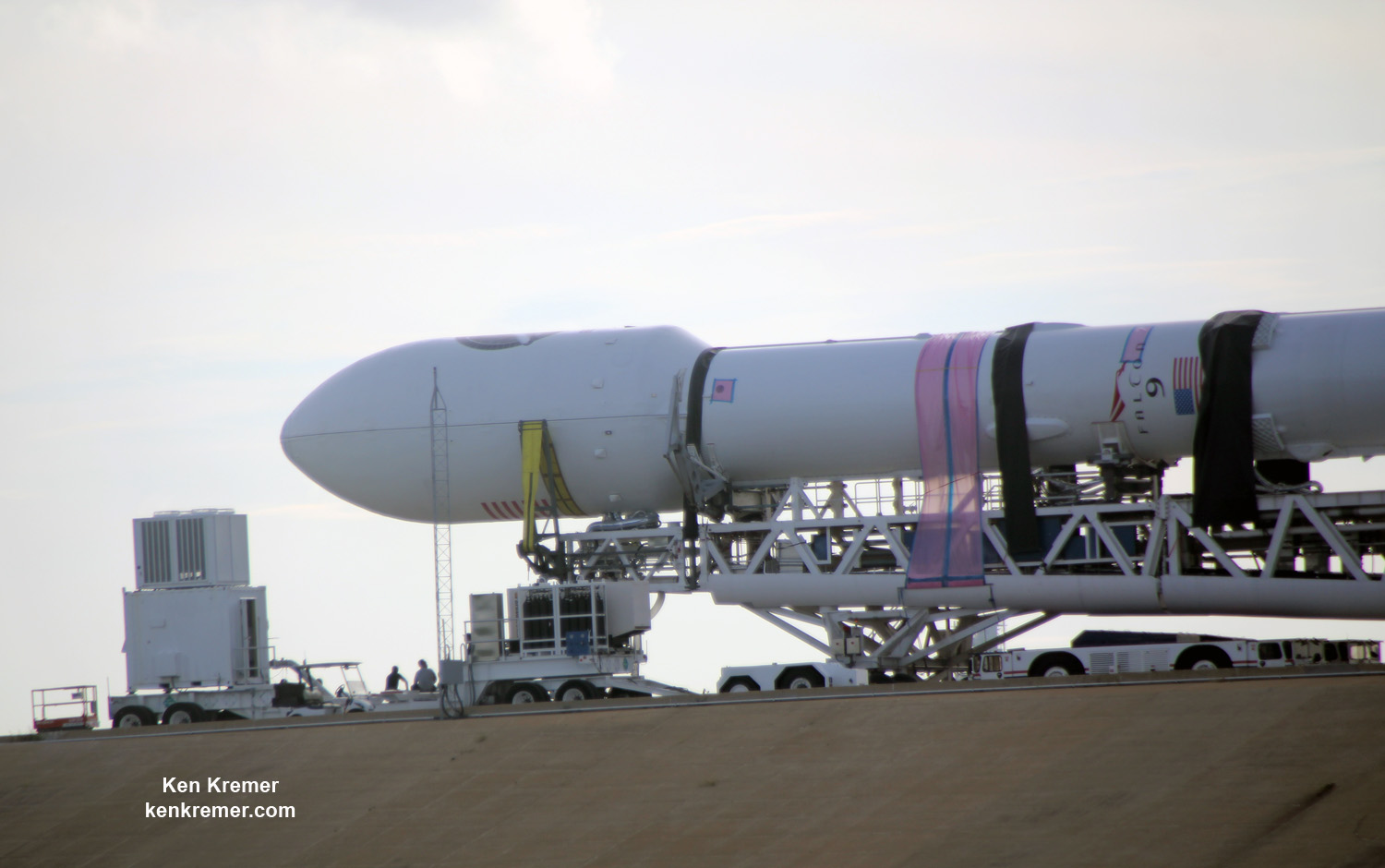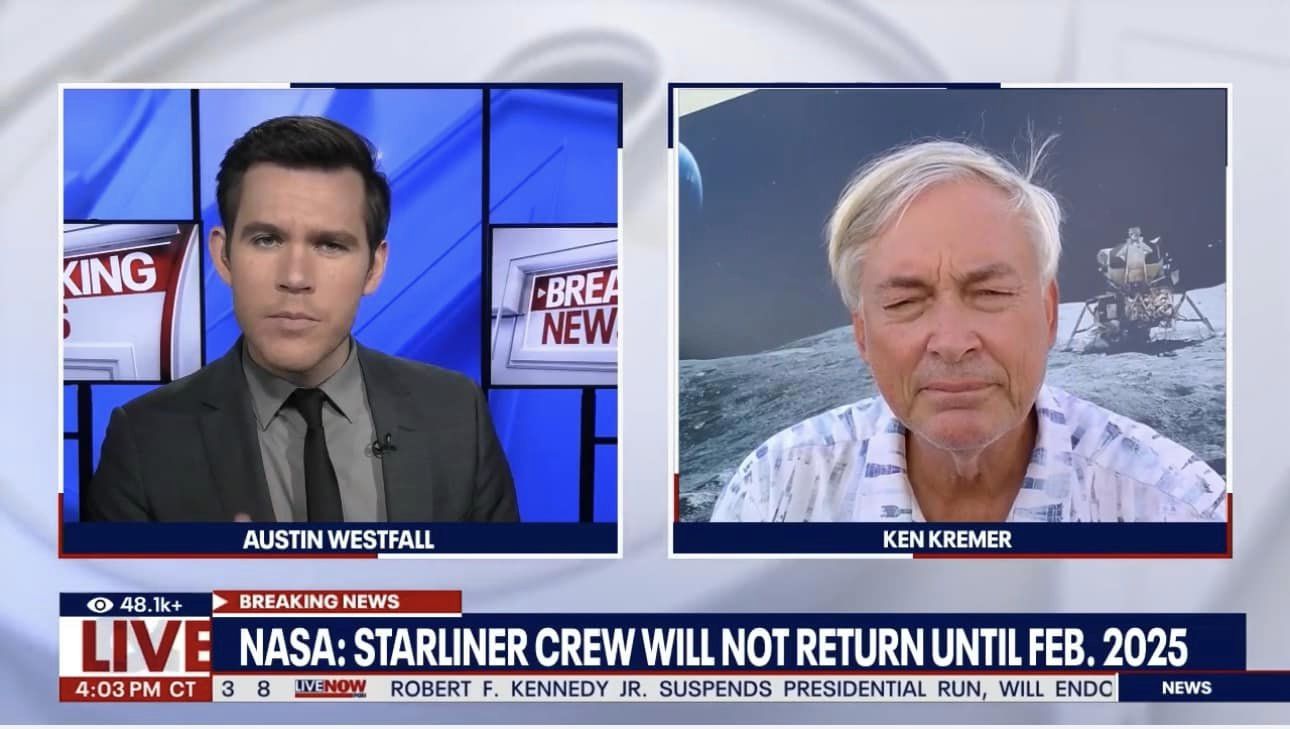
For Space Upclose.com and RocketSTEM
CAPE CANAVERAL, FL – The U.S. Air Force X-37B secretive reusable mini spaceplane landed in the middle of the night under cover of darkness this morning, Sunday, Oct. 27 at the Kennedy Space Center (KSC) in Florida after a record breaking mission of well over two years in orbit.
The surprise landing with no warning was accompanied by sonic booms – heard by some who were awoken as the X-37B touched down on the runway used for 3 decades by NASA’s space shuttle at the former shuttle landing facility.
The mission also dubbed Orbital Test Vehicle Mission 5 (OTV-5) lasts a record breaking 780 days in orbit – eclipsing the prior record of 718 days in orbit by OTV-4.
The X-37B reusable mini-shuttle is a secretive technology testing spaceplane flying for the U.S. Air Force Rapid Capabilities Office.
Here are details from the USAF:
The Air Force’s X-37B Orbital Test Vehicle Mission 5 successfully landed at NASA’s Kennedy Space Center Shuttle Landing Facility Oct. 27, 2019 at 3:51 a.m.
The spaceplane conducted on-orbit experiments for 780 days during its mission, recently breaking its own record by being in orbit for more than two years. As of today, the total number of days spent on-orbit for the entire test vehicle program is 2,865 days.
“The X-37B continues to demonstrate the importance of a reusable spaceplane,” said Secretary of the Air Force Barbara Barrett. “Each successive mission advances our nation’s space capabilities.”
This is the Air Force’s premier reusable and unmanned spacecraft providing the performance and flexibility to improve technologies in a way that allows scientists and engineers to recover experiments tested in a long-duration space environment.
“The safe return of this spacecraft, after breaking its own endurance record, is the result of the innovative partnership between Government and Industry,” said General David L. Goldfein, Chief of Staff of the Air Force. “The sky is no longer the limit for the Air Force and, if Congress approves, the U.S. Space Force.”
Managed by the Air Force Rapid Capabilities Office, the X-37B program performs risk reduction, experimentation and concept of operations development for reusable space vehicle technologies.
“This program continues to push the envelope as the world’s only reusable space vehicle. With a successful landing today, the X-37B completed its longest flight to date and successfully completed all mission objectives,” said Randy Walden, Director, Air Force Rapid Capabilities Office. “This mission successfully hosted Air Force Research Laboratory experiments, among others, as well as providing a ride for small satellites.”

The distinctive ability to test new systems in space and return them to Earth is unique to the X-37B program and enables the U.S. to more efficiently and effectively develop space capabilities necessary to maintain superiority in the space domain.
“This spacecraft is a key component of the space community. This milestone demonstrates our commitment to conducting experiments for America’s future space exploration,” said Lt. Col. Jonathan Keen, X-37B program manager. “Congratulations to the X-37B team for a job well done.”
This will be the second time the X-37B landed at the Kennedy Space Center Shuttle Landing Facility–Mission 4 landed after 718 days in orbit. The spaceplane was designed for an on-orbit duration of 270 days.
“Today marks an incredibly exciting day for the 45th Space Wing,” said Brig. Gen. Doug Schiess, 45th Space Wing commander. “Our team has been preparing for this event, and I am extremely proud to see their hard work and dedication culminate in today’s safe and successful landing of the X-37B.”
….

The fifth X37-B mission launched on Sept. 7, 2017 at 10 a.m. EDT (1400 UTC) from seaside Launch Complex 39A on NASA’s Kennedy Space Center on a SpaceX Falcon 9 into nearly clear blue skies after the classified launch time was kept guarded until just 10 minutes before liftoff.
The OTV-5 mission marked the programs maiden liftoff on the 230-foot-tall SpaceX Falcon 9.
All four prior OTV missions launched on the United Launch Alliance Atlas V rocket from Space Launch Complex 41 at the Cape and ended with runway landings in either California of Florida.
The U.S. Air Force is preparing to launch the sixth X-37B mission from CCAFS in 2020 on a ULA Atlas V.
The X-37B launches vertically like a satellite but lands horizontally like an airplane and functions as a reliable and reusable space test platform for the U.S. Air Force.
The Boeing-built X-37B is processed for flight at the Kennedy Space Center, FL, using refurbished former NASA space shuttle processing facilities (OPFs) now dedicated to the reusable mini-shuttle, also named the Orbital Test Vehicle (OTV).
The 11,000 pound (4990 kg) state-of -the art reusable OTV space plane is about a quarter the size of a NASA space shuttle. The vehicle measures 29 ft 3 in (8.9 m) in length with a wingspan of 14 ft 11 in (4.5 m).
The X-37B was originally developed by NASA but was transferred to the Defense Advanced Research Projects Agency (DARPA) in 2004.
Since then most but not all of the spaceplane’s goals have been shrouded in secrecy.

Stay tuned here for Ken’s continuing Earth and Planetary science and human spaceflight news: www.kenkremer.com –www.spaceupclose.com – twitter @ken_kremer – email: ken at kenkremer.com
Dr. Kremer is a research scientist and journalist based in the KSC area, active in outreach and interviewed regularly on TV and radio about space topics.
………….
Ken’s photos are for sale and he is available for lectures and outreach events




